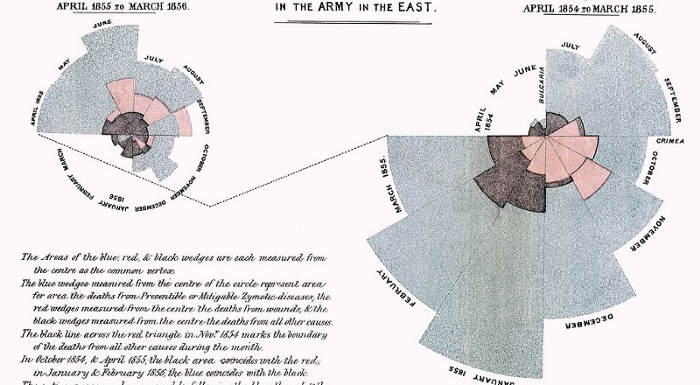Behind the Analogies
“What’s going on behind the analogies”– Sandra González-Bailón Outcomes are not always intentional. We trigger anticipated and unforeseen things with our actions. The “invisible hand” is consequential, known only through its effects. Like contagion processes, our actions are enmeshed in interrelated networks. These are some of the metaphors discussed by Sandra González-Bailón in her research on metaphorical thinking, social processes, and communication structures. She engages head-on with the challenges and affordances of digital realities- using data to learn about or “decode” aspects of social life. “Analogies help make creative connections; but they can also draw pictures of the world that are too coarse-grained for any useful purpose.” (29, Decoding the Social World) Polar area diagram by Florence Nightingale published in Notes on Matters Affecting the Health, Efficiency, and Hospital Administration of the British Army and sent to Queen Victoria in 1858. Models and metaphors are helpful for human cognition and communication, it seems unlikely that they can (or should) be avoided. The role of metaphors and other modes of abstraction are sorts of “black boxes” that are convenient for communication. We humans think with them, but they do shape our view of reality. “The language of argument is not poetic, fanciful, or rhetorical; it is literal. We talk about arguments that way because we conceive of them that way — and we act according to the way we conceive of things.” (pg. 5, Lakoff & Johnson’s Metaphors We Live By) Perhaps other metaphors might be more productive — other models may work better than their forerunners. Read More

